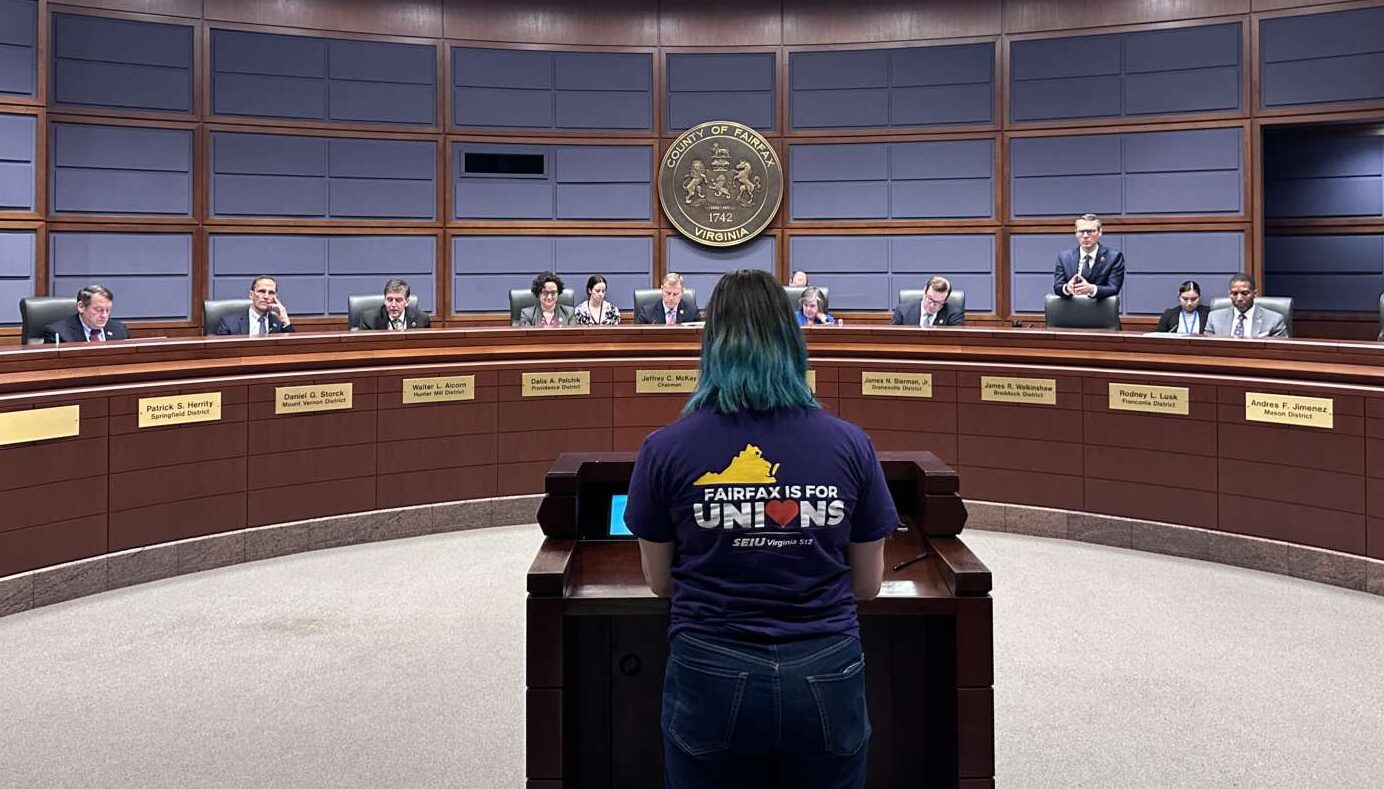
The Fairfax County Board of Supervisors faces tough decisions ahead of next week’s budget markup session, following demands from local unions to increase county employees’ wages.
Last week, dozens of county employees from various departments gathered at a series of public hearings to protest the 2% market rate adjustment (MRA) included in the county executive’s proposed fiscal year 2025 budget — asking instead for an increase of at least 4%.
Every year, the county compares its salaries against similar jobs in the area to ensure pay is competitive. Though the full market rate adjustment was estimated at over 4%, County Executive Bryan Hill proposed allocating roughly $24 million for a 2% increase for FY 2025, citing revenue constraints.
Many county employees who attended the April 16-18 public hearings on the advertised budget, which will take effect on July 1, argued that wouldn’t be enough to keep up with the cost of living.
Lauren Tumbleson, a social services worker and member of SEIU Virginia 512, a union for general county employees, said she is considering leaving her job to care for her 4-year-old son, as child care costs would be too high without a bigger pay raise.
“Not fully funding the MRA this year will have a direct impact on our daily lives,” she said during the April 17 hearing.
Other SEIU members and representatives from the Fairfax Workers Coalition (FWC) said that without the pay raises, departments will continue to experience staff turnover, reducing the quality of services to residents.
FWC member Marie Kenealy, a veteran parole officer at the Juvenile and Domestic Relations District Court, noted that inadequate staffing and training puts at risk both the safety of the staff and their ability to help youth in the judicial system.
“We are part of the courts, but we do not have the protections afforded to law enforcement,” she said on April 17. “…At times, we escort violent offenders without adequate protection or training. At times, we are confronted with gang violence, aggression, exposed to fentanyl, and we’re often conducting home visits where we know firearms are likely present.”
Without fair wages and improved conditions, the court risks losing experienced personnel, Kenealy said.
Many local educators called on the Board of Supervisors to fully fund Fairfax County Public Schools Superintendent Michelle Reid’s $3.8 billion budget request — including an additional $254 million to adequately compensate the public education system’s employees.
Jennifer Ives, a special education teacher at James Madison High School in Vienna, said she knows several experienced colleagues who have left to take higher paying jobs in surrounding counties.
Ives argued that funding the superintendent’s request could mean less staff turnover, because teachers may be able to afford to live closer to where they work.
“The increase could help us find one of the cheaper rentals in the area and maybe I could have a 30-minute commute instead of an hour and a half,” Ives said. “I’d be able to sleep in past 5 a.m. and maybe get home an hour before dinner.”
When Hill presented his budget proposal in February, supervisors lamented that the burden of funding FCPS falls too heavily on the county due to limited funding from Virginia.
Earlier this month, Governor Glenn Youngkin proposed budget amendments that, according to WTOP, would reduce funding for FCPS by nearly $17 million for FY 2025 and $24 million in fiscal year 2026.
Regardless of the state budget, though, Fairfax County School Board Chair Karl Frisch argued the county needs to ensure the school system can pay its employees competitive wages at a time when enrollment and demand for services is increasing countywide.
“Our budget request does not include new initiatives,” Frisch said during the board’s April 16 hearing. “We are focusing on what is needed to continue ensuring excellence in our schools.”
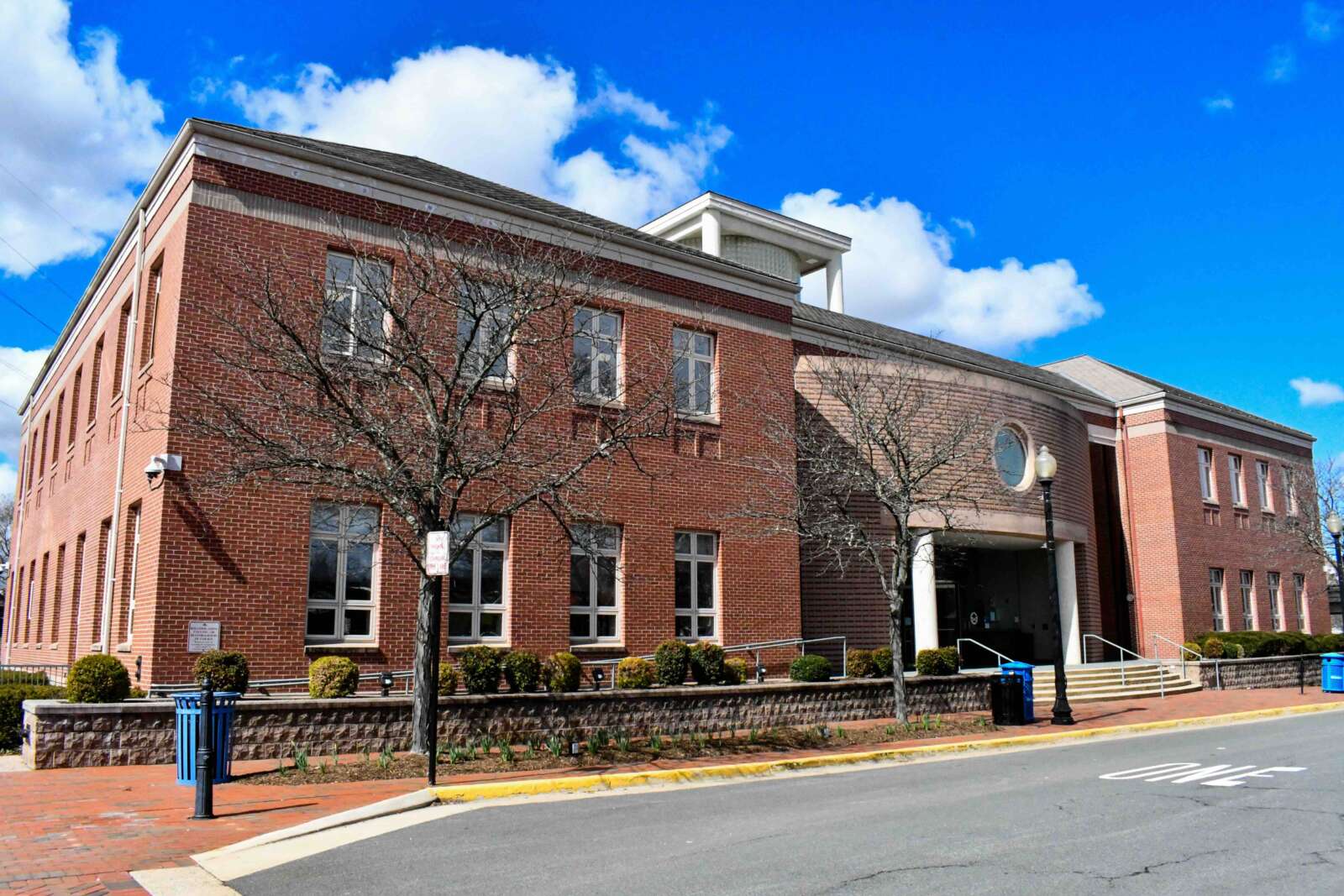
Water and sewer rates are set to increase as part of the Town of Herndon’s proposed budget for fiscal year 2025.
Released on Friday (March 29) by Town Manager Bill Ashton II, the proposed budget leaves the real estate tax rate unchanged at $0.26 per $100 of assessed value, though bills are still expected to go up due to rising property assessments.
However, the water service rate is set to increase from $3.47 this year to $4.08 per 1,000 gallons of water consumption in the next budget year, which starts July 1. The sewer rate is set to increase from $8.27 to $8.93 per 1,000 gallons of water consumption in fiscal year 2025.
The changes were spurred by higher supply and treatment costs that have affected the region, the Town of Herndon said in a press release. Town staff have been examining potential increases since 2022.
Ashton emphasized that the state of the economy calls for “fiscal prudence.”
The Proposed FY 2025 Budget allows for continuation of the programs and services valued by our residents and businesses, as well as funding for new initiatives such as previously deferred public works projects as well as work on the town’s Comprehensive Plan, a document that guides our present and future in such elements as land use, transportation, historic areas, community service facilities, public buildings and utilities.
The quarterly service charge for water per bill will be $16.34 under the proposed budget. An additional fee of $6.94 per 1,000 gallons would be charged for all water consumed during peak use periods that’s in excess of the average consumption for the preceding billing periods.
The overall $74 million budget package increases spending by 19.9%. If approved, funding would go toward employee pay raises, increased pension and retirement costs, and capital projects, among other expenses.
Notable initiatives for the coming year include the Herndon Police Department’s plan to re-introduce a dedicated traffic section with motor officers “to enhance roadway safety through education and enforcement.” A second part-time parking enforcement official will be hired to help address parking violations.
“Overall, these changes reflect the town’s commitment to maintaining and improving its infrastructure, public safety, and recreational facilities for its residents,” the budget document says. “These budget changes also demonstrate the town’s responsible financial management and dedication to providing quality services to its community.”
The budget is officially adopted on June 30 following a series of meetings, including public hearings on the proposed budget on April 9 and April 23. Both meetings begin at 7 p.m. in the Ingram Council Chambers.

Fairfax County’s next budget could give its public libraries a little more spending money for books.
At the Board of Supervisors meeting on Tuesday (March 19), Hunter Mill District Supervisor Walter Alcorn proposed allocating an additional $500,000 in the upcoming fiscal year 2025 budget to Fairfax County Public Library’s book collection.
“The Library continues to be one of the most popular services provided by the county and our Library branches are a vital hub of community information,” Alcorn said in his board matter. “…We continue to face issues with meeting the demand for library materials even with the digital formats.”
County Executive Bryan Hill presented a proposed budget on Feb. 20 that increases FCPL’s funding by $410,027, partially offsetting a $1.2 million jump in personnel-related costs with cuts to the system’s operating expenses.
Planned reductions include eliminating a vacant management position, shifting to black-and-white public copiers instead of color ones, adjustments to the number of computers at each branch based on usage, taking over data storage from a third-party vendor and making FCPL’s quarterly magazine digital-only.
Overall, the county is budgeting just under $35 million in expenditures for the library system, most of which ($22 million) goes toward day-to-day operations at its 23 branches.
Alcorn noted that the county’s funding is supplemented by contributions from the nonprofit Fairfax Library Foundation and the Friends groups that support individual branches. The Friends of Reston Regional Library, for instance, donated $100,000 earlier this year to boost the children’s books collection county-wide.
However, funding for books and other materials remains inadequate “to meet the needs of our residents,” who sometimes have to wait months or even more than a year for popular items, he said.
With increased demand for popular and new materials, the Library must balance a proper allocation of limited resources for those items with the needs for materials in support of K-12 students, and ensuring that materials are updated, available in print, large print, audio and digital copies and in multiple languages. Additional funds to the collection budget will ensure that we are providing the resources our community demands from our Library and decrease the wait times so that people can access those resources in a timely fashion.
The Board of Supervisors agreed unanimously on Tuesday to add Alcorn’s proposal to its list of items to consider incorporating into the budget, which includes $3.83 million in not-yet-allocated funds.
Springfield District Supervisor Pat Herrity also asked county staff to find out why FCPL is only devoting about 10% of its budget to purchasing materials and whether that guidance comes from the county, the library’s Board of Trustees or the state.
“I think we do need to clearly invest in our library collections,” Herrity said. “It’s something our citizens like. It’s a basic public service we need to promote.”
Town hall meetings on the proposed budget are currently underway, with the Franconia District holding the next one at 6 p.m. today (Friday). Public hearings are scheduled for April 16-18, and the board will mark up the budget, including determining whether to add items like the library funding, on April 30.
A final FY 2025 budget will be adopted on May 7.
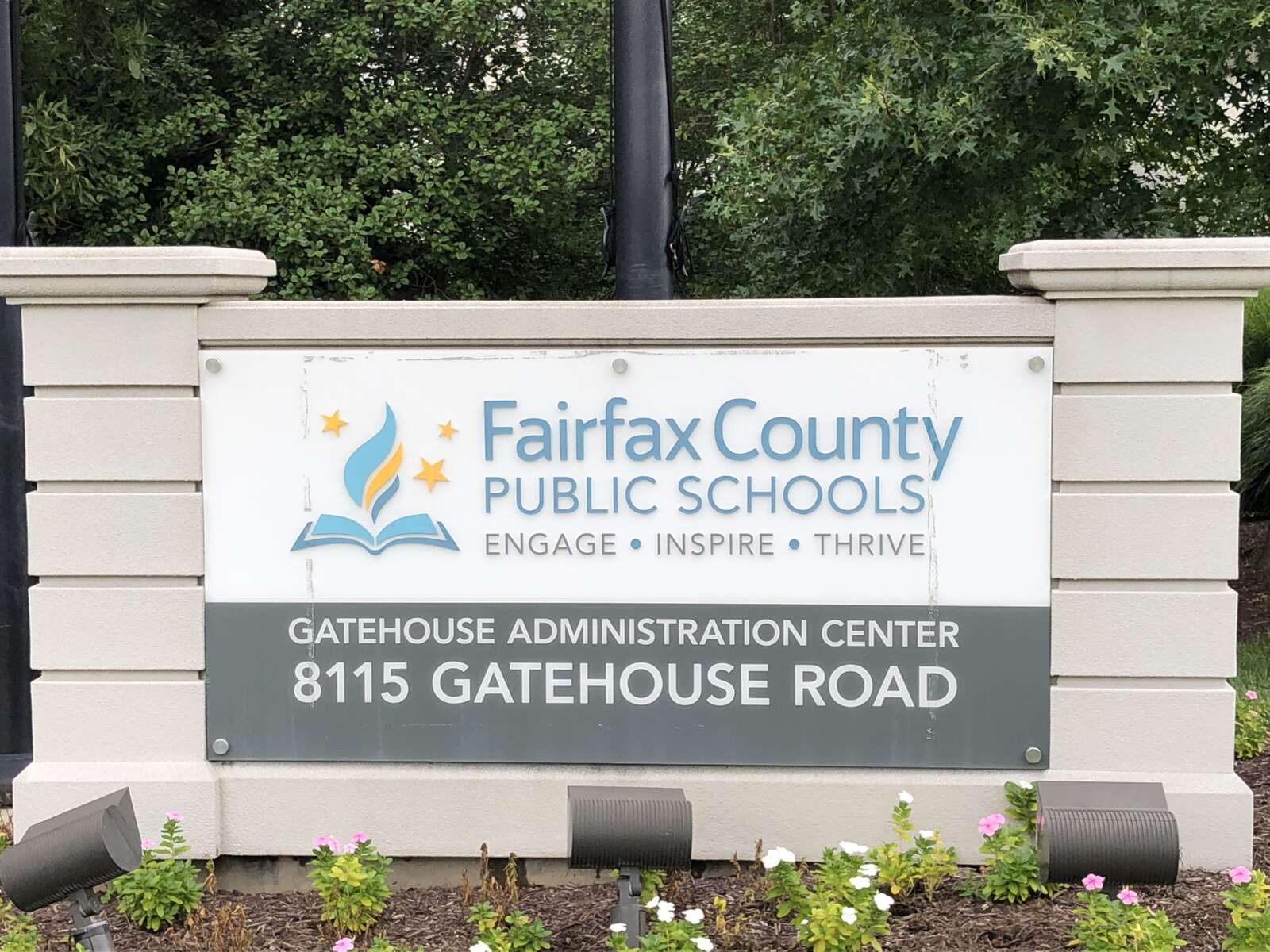
Settlement money from vape-maker Juul will help Fairfax County Public Schools bolster security at some high schools.
The Fairfax County School Board is set to vote tomorrow (Thursday) on adjustments to the school system’s fiscal year 2024 budget, including allocations of the $3.2 million it received from Juul after settling a class-action lawsuit over the company’s flavored e-cigarettes last year.
In a presentation to the board on March 7, FCPS staff recommended using the funding to “install security scanning technology at select high schools” as part of a new pilot program. If approved, the funds would add onto $3 million designated for the program in August, FCPS Chief Financial Officer Leigh Burden noted.
However, FCPS has been tight-lipped about the pilot, including on the technology being implemented and how many schools are participating.
“At this time, we are not prepared to provide details of the program to the public,” an FCPS spokesperson told FFXnow. “This information will be released when, and as appropriate, to include the identification of schools. Safety and security physical and technical systems are needed to assist in operational safety planning.”
FCPS confirmed the safety and security screening pilot is separate from the security vestibules that it has been adding at dozens of schools around the county. Prioritized by the school board in response to the May 24 shooting in Uvalde, Texas, the vestibules add an extra layer of verification for visitors seeking to enter school buildings.
Last April, Superintendent Michelle Reid detailed several other security measures that FCPS was either testing or considering, including vape sensors in bathrooms, panic alarm systems and a weapons screening system.
At the time, FCPS said the weapons screening system was in the pilot phase. It’s unclear if that’s the same as the screening technology pilot now poised to get additional funding.
The school board also approved funding in December for exterior security cameras at nine elementary schools, along with money to support continuous employee background checks.
Other changes proposed as part of the FY 2024 third-quarter review include a transfer of $3.3 million from a reserve fund to a fund dedicated to supporting FCPS’ summer school programs.
“Summer school focuses on executive functioning, acceleration of reading and mathematics foundation skills, enrichment programs at the elementary and middle school level, and course credit recovery to ensure on-time graduation at the high school level,” staff said in a summary of the third-quarter review.
The money will support programs for 35,000 students at 73 sites, according to Burden. FCPS had set aside a total of $6.7 million in August for enhanced summer learning programs, but that was before staff finalized the locations and enrollment projections.
The budget is also being adjusted to reflect a grant received for food services, new federal funding for adult education and an $143.5 million increase in “additional contractual commitments” for bond-funded renovation projects at Bren Mar Park, Brookfield and Lees Corner elementary schools.
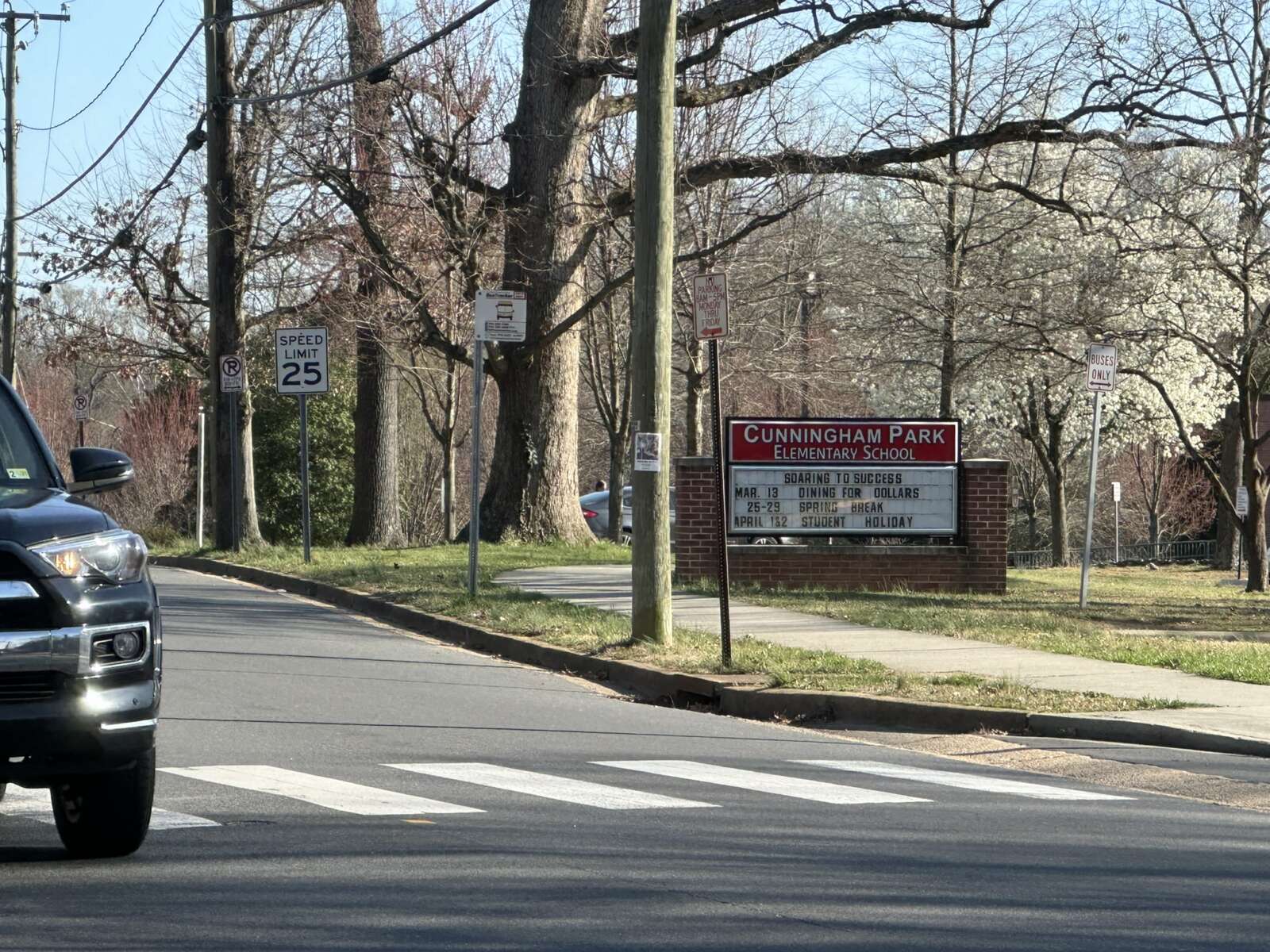
(Updated at 4:20 p.m. on 3/25/2024) Schools in Vienna, Herndon and Fort Belvoir have or are at risk of losing their crossing guards due to budget constraints facing the Fairfax County Police Department.
The Vienna Town Council and Mayor Linda Colbert were informed at a recent work session that the county will no longer provide crossing guards for any schools in the town’s limits because of a lack of funding, Councilmember Howard Springsteen shared at the council’s meeting on Monday (March 18).
The nine affected crossings would instead need to be covered by the Vienna Police Department, which doesn’t have sufficient staffing to handle the added duties, according to Springsteen, whose comments were first reported by Patch.
“Schools are not our responsibility. It’s a county responsibility,” he said. “…I know the mayor’s been working on this and the council’s been pretty upset about this. We’re working on that, but people need to be aware of some of the issues we deal with behind the scenes.”
Vienna isn’t the only place affected. The FCPD said it would also eliminate coverage for one crossing each in Herndon and Fort Belvoir, according to a letter from Vienna Police Chief Jim Morris to Fairfax County Police Chief Kevin Davis.
The Herndon Police Department says it was notified late last fall that FCPD was removing its officers from a crossing at Herndon Elementary School, effective Jan. 1. Because only one spot was affected, the town was able to fill the gap.
“Herndon does not have a school crossing guard program, but we take the safety of our kids very seriously,” HPD spokesperson Lisa Herndon said. “Unlike the Town of Vienna, which has been left with multiple vacancies as a result of the crossing guards being removed, we have only one crossing and have managed to cover it with patrol officers each day.”
Fort Belvoir has also taken over crossing guard duties at its on-base school, according to March 19 memo from the FCPD to the Fairfax County Board of Supervisors.
The crosswalk covered by an FCPD officer was across Meeres Road in front of Fort Belvoir Upper School and the Child Development Center, Fort Belvoir Public Affairs told FFXnow.
The Army installation says it’s “currently working with FCPD, Fairfax County Public Schools, and Fort Belvoir Elementary school leadership to discuss a way ahead.”
“As we gather more information, Fort Belvoir will be in a better position to decide on the best way to ensure crosswalk safety,” Fort Belvoir Public Affairs said. “The safety of our children remains our number one priority.”
The FCPD indicated in a statement to FFXnow that discussions about how to handle the school crossings in Vienna are still in the preliminary stages.
“Given the primary jurisdiction responsibilities afforded to the Town of Vienna for law enforcement and public safety, the FCPD has engaged the Vienna Police Department in preliminary discussions surrounding school crossing coverages,” the department said. “As our conversations continue, all school crossing coverages will be handled by the FCPD.” Read More

(Updated at 2:40 p.m.) Vienna officials have released a proposed budget that maintains the town’s current real estate tax rate, despite continued economic challenges from inflation and supply chain issues.
The $53.8 million budget for fiscal year 2025, which starts July 1, holds the tax rate at $0.1950 per $100 of assessed value. Combined with a cumulative 3-cent reduction over the previous three years, the town will have cut its tax rate by 14% since 2021, Town Manager Mercury Payton said in a message to Mayor Linda Colbert and the town council.
However, residential property owners can still expect higher bills, thanks to rising home values. Residential properties assessed at over $1 million — the average for a second year — now make up 36.4% of all homes, exceeding their 29.9% share last year and the 26.7% of homes valued at $500,000 to $800,000 this year.
“Real estate taxes have increased due to increasing assessments, as Vienna is a very desirable place to live,” Payton said in the budget proposal. “The average residential tax bill is estimated at $2,204, a 6.5 percent increase over last year, due to a 7.0 percent increase in assessed value of existing (no growth) properties.”
Strong returns on cash deposits, sales taxes and business license fees will help fund a $3.7 million, or 7.5%, increase in the budget compared to fiscal year 2024. Most of that will cover increased costs related to water and sewer needs and borrowing.
The town anticipates borrowing $1.55 million for 22 new vehicles, including four police cars, three police motorcycles, one dump truck, pickup trucks, a tractor, a mower and two trailers.
“Economic trends in inflation and supply chain difficulties continue and are leading to pressure on expenditures without a commensurate increase in revenue,” Payton wrote, noting that meals tax collections have been flat through the middle of FY 2024.
Still, Vienna is projecting a $554,000, or 7.6%, increase overall in local tax revenue — fueled by business
licenses and sales taxes — and parks and recreation fees are expected to go up by $259,000 or 19.7%.
Priorities addressed by the proposed budget include compensation increases totaling 4% for general employees and 5.5% for sworn police officers, which “will assist with…recruitment and retention pressures.”
Starting on July 1, the town will implement new child and family care leave policies for employees who have become new parents or need to care for an immediate family member.
Employees who’ve worked for Vienna for at least 12 months will get six weeks of paid leave to care for a newborn or newly adopted or fostered child, or to get pregnancy-related medical care. The family care leave policy offers up to two weeks or 80 hours of paid time off so employees can care for a sick or injured family member.
Identified as a top priorty of the town council in a Jan. 22 work session, the new leave policies don’t have a direct cost, but they “may result in slight increases in overtime to cover positions utilizing the leave,” according to the proposed budget. Read More
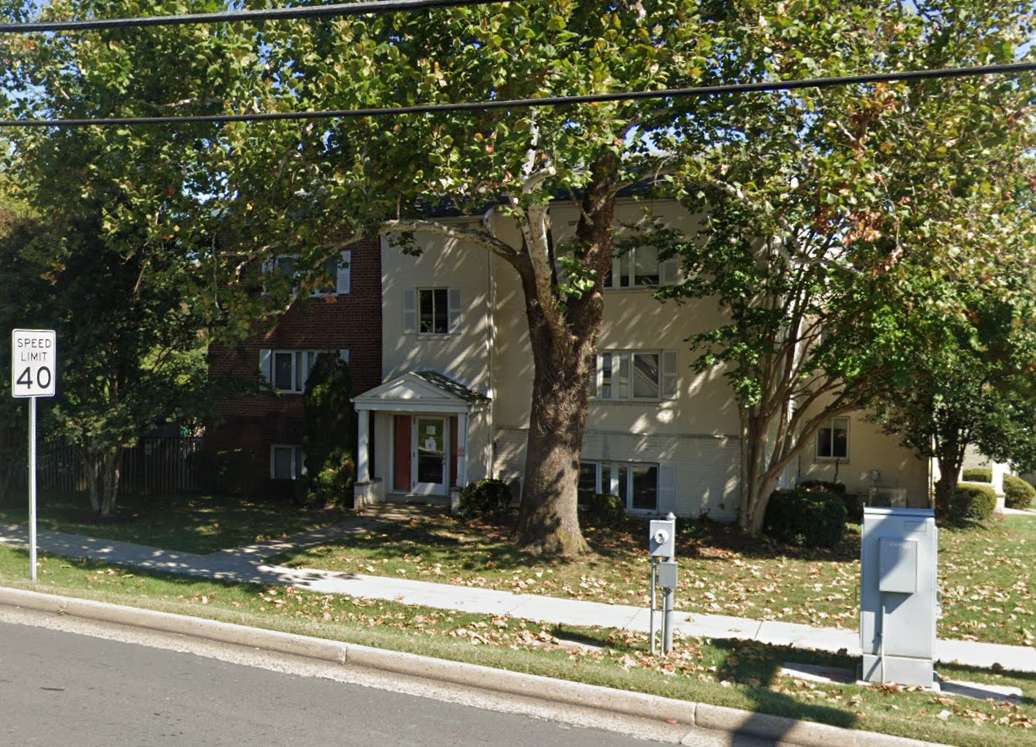
(Updated at 3:35 p.m.) Congress has passed another short-term budget package, averting a partial shutdown of the federal government just hours before a midnight deadline.
In addition to funding the Justice Department, Housing and Urban Development, and other key agencies, the slate of bills passed 75-22 by the Senate on Friday (March 8) includes $12.7 billion in “pork” — money designated for local projects requested by lawmakers for their constituents.
In a joint press release, Sens. Tim Kaine and Mark Warner announced that Fairfax County and other Virginia localities will be among the beneficiaries of the more than 6,600 projects that got funding, per the Associated Press.
“I’m proud that we secured funding for 105 community projects across Virginia that will improve transportation, upgrade water infrastructure, support health care, and more,” Kaine said. “I urge Congress to take up the rest of the government funding bills as soon as possible.”
According to breakdowns provided by Warner’s and Rep. Gerry Connolly’s offices, the biggest allocation for Fairfax County is $4.1 million “to fund a new homeless and domestic violence shelter for families.”
The county’s existing domestic violence and family shelters have exceeded their useful lives, but instead of building new facilities, the Fairfax County Redevelopment and Housing Authority is planning to convert an existing “extended stay” hotel that will be able to house about 50 families a day.
“Site acquisition activities are ongoing, with the goal of securing a location that is well-served by transit, and close to jobs and services,” FCRHA spokesperson Allyson Pearce said.
Connolly’s office says the site “will entail combining rooms, creating service and office space, and other changes to the existing hotel setup,” noting that converting an existing building instead of constructing a new one will enable the county “to deliver this essential, brand new facility years earlier than might otherwise be accomplished.”
The county has two shelters specifically for people fleeing domestic violence — Artemis House and Bethany House — and two shelters that accommodate people with children — the Katherine Hanley shelter outside Centreville and the Patrick Henry shelter in Seven Corners.
The Fairfax County Board of Supervisors approved plans in August 2022 to replace the Patrick Henry shelter with supportive housing after some delays related to land acquisition challenges.
The appropriations package also includes funding for several road and pedestrian projects:
- Spring Street widening from four to six lanes between Herndon Parkway and Fairfax County Parkway ($1 million)
- Fox Mill Road and Pinecrest Road intersection improvements in Herndon ($850,000)
- Silverbrook Road and Lorton Road intersection improvements ($850,000)
- Sidewalk on Ninian Avenue and along Bush Hill Drive to improve safety and accessibility for Bush Hill Elementary School students in Rose Hill ($850,000)
- Gunston Road shared-use path from Julia Taft Way to the Pohick Bay Golf Course entrance in Lorton ($500,000)
- Compton Road bicycle and pedestrian path from the Bull Run Special Events Center access road to the Cub Run Stream Valley Trail in Centreville ($500,000)
- Stone Road trail from the I-66 interchange to an existing trail along southbound Route 28 in Centreville ($500,000)
The Fairfax County Department of Transportation applied for federal grants last summer to fund the Bush Hill and Compton Road projects. Read More
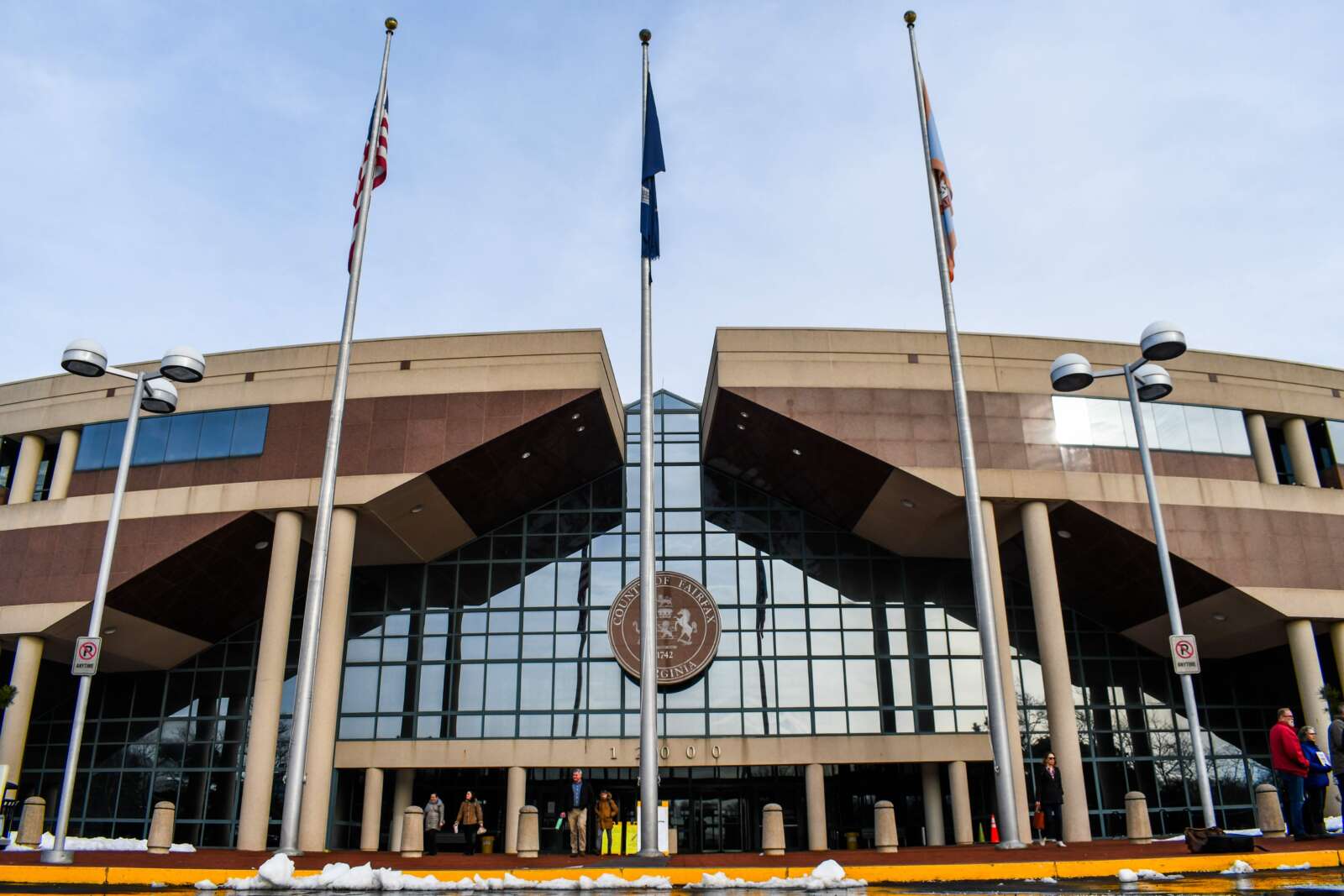
The Fairfax County Board of Supervisors has advanced a proposal for a 4-cent real estate tax increase, which would mark the first hike in six years, if approved.
Yesterday (Tuesday), the board gave County Executive Bryan Hill the green light to advertise the fiscal year 2025 proposed budget and schedule a public hearing starting Tuesday, April 16, at 3 p.m.
The public hearing will be held in the board auditorium at the Fairfax County Government Center (12000 Government Center Parkway) over three days, ending on April 18.
Several board members, including Chairman Jeff McKay, acknowledged the necessity of raising tax revenue to pay for employee raises, schools and Metro, among other priorities. However, they noted that the tax rate adopted in the final budget draft may be lower than the advertised rate, which sets a ceiling on what the board can approve.
“It is the prudent thing to do,” McKay said, adding that the board needs flexibility to increase the tax rate if the state does not provide enough funding for specific items, such as schools.
Under the proposed plan, the real estate tax rate would increase from $1.095 per $100 to $1.135, boosting the average tax bill by more than $524. Initially, Hill had recommended a 6 to 8-cent hike, but the board rejected the proposal.
If adopted, the new tax rate would generate an additional $129.28 million in revenue, which would help offset the revenue loss caused by a decline in commercial property values, particularly office space.
About 73% of taxable residential properties in the county saw their value rise this year, compared to just 36% of non-residential parcels, according to the county’s Department of Tax Administration. The average residential property assessment increased by 2.86% to $744,526 from 2023.
Also included in the proposed budget is an 8.8% increase in personal property taxes and a proposed 10-cent-per-pack increase in cigarette taxes, raising the total projected revenue to $363.22 million more than last fiscal year.
The advertised budget largely focuses spending to essential areas like public schools and employee compensation, with nearly half of the funding ($165 million) allocated to Fairfax County Public Schools — falling short of Superintendent Michelle Reid’s request for an additional $254 million.
While board members acknowledged the significance of Reid’s request, several noted during yesterday’s meeting too much of the burden would fall on property owners.
Instead, supervisors blamed the state for failing to adequately fund the school system, pointing out that Virginia’s funding for public education falls well below the national average. They also highlighted Gov. Glenn Youngkin’s proposed state budget, which would reduce funding for K-12 schools.
Springfield District Supervisor Pat Herrity, the lone Republican on the board, said that while he supports the advertised rate, he wants to see the board try to whittle the number down.
“I hope we can start looking at a deep dive on the budget and see what we can do for our taxpayers,” he said.
In addition to testifying at next month’s public hearings, community members can provide feedback to the county on the proposed budget and tax rate online, by text, phone and email.
A final budget and tax rate will be adopted by the board on May 7.

To further its environmental goals, Fairfax County’s to-do list should include building an electric vehicle charging network, addressing “critical” staff shortages, and addressing development pressure, the Environmental Quality Advisory Council (EQAC) says in a new report.
An employee compensation policy update to attract and retain workers in departments such as wastewater and solid waste was the top recommendation in the 2023 Annual Report on the Environment (ARE), EQAC Chair Larry Zaragoza told the Board of Supervisors during its environmental committee meeting on Tuesday (Feb. 29).
“If you had a problem in a facility or in operations that caused some other issues, the consequences could require a lot of corrective action, or they could be publicly undesirable,” he said.
Although it has seen some progress, Zaragoza said the Department of Public Works and Environmental Services (DPWES), in particular, is seeing higher vacancy rates of 16 to 22%. In some “major functions,” rates have climbed as high as 32%, according to the presentation.
Zaragoza acknowledged that the recommendation to develop a network of charging stations for electric vehicles would be challenging to implement, but necessary.
“This seems to be an issue that is challenging the nation with respect to the conversion to EVs,” Zaragoza said. “People have a fear that they won’t have options for charging their vehicles.”
Board of Supervisors Chairman Jeff McKay said that, while it’s true more EV charging stations are needed, the biggest issue is maintenance, speculating that, on a typical day, about 50% of chargers don’t seem to work.
He advised the council to look into ways to address the maintenance issues, including potential legislative measures.
“The EV charging people are racing to get as much federal money as they can to install these and then don’t have anybody to come back and repair them,” McKay said. “And to me, that’s a huge threat to EV utilization because [when] you see them on a map, you expect them to be working.”
Reiterating a recommendation made last year, the report calls for the county to provide more funding for its stormwater program through either one of two options:
- An increase in the Stormwater Service District tax in 2024 by at least one-quarter penny, from 3.25 cents to 3.5 cents per $100 of assessed real estate value
- A change in the base property tax rate
Mason District Supervisor Andres Jimenez asked the council to keep equity and low-income residents in mind when considering these adjustments.
“I would hope that there will be something in place to ensure that the cost increases are equitable and do not disproportionately affect low-income residents,” Jimenez said.
The report also highlights a need to address pressure from development while preserving trees and minimizing ecological degradation.
“As you have development, you often have the loss of trees, you often have loss of habitat, and to the extent that it’s possible, it’s good to try to preserve as much as you can in this process,” Zaragoza said.
McKay agreed with the need to minimize environmental damage but said the council should also carefully consider how that priority intersects with the “oldest parts of the county that are in desperate need of revitalization.”
According to the report, proposed topics that the EQAC will review this year include the impacts of data centers, flood risks, and water security.
County staff have been developing guidelines for regulating noise, water pollution, power usage and other issues raised by data centers. In a new ARE recommendation, EQAC suggests that the county collect energy consumption data on its current and planned data centers, including the extent to which they utilize green energy.
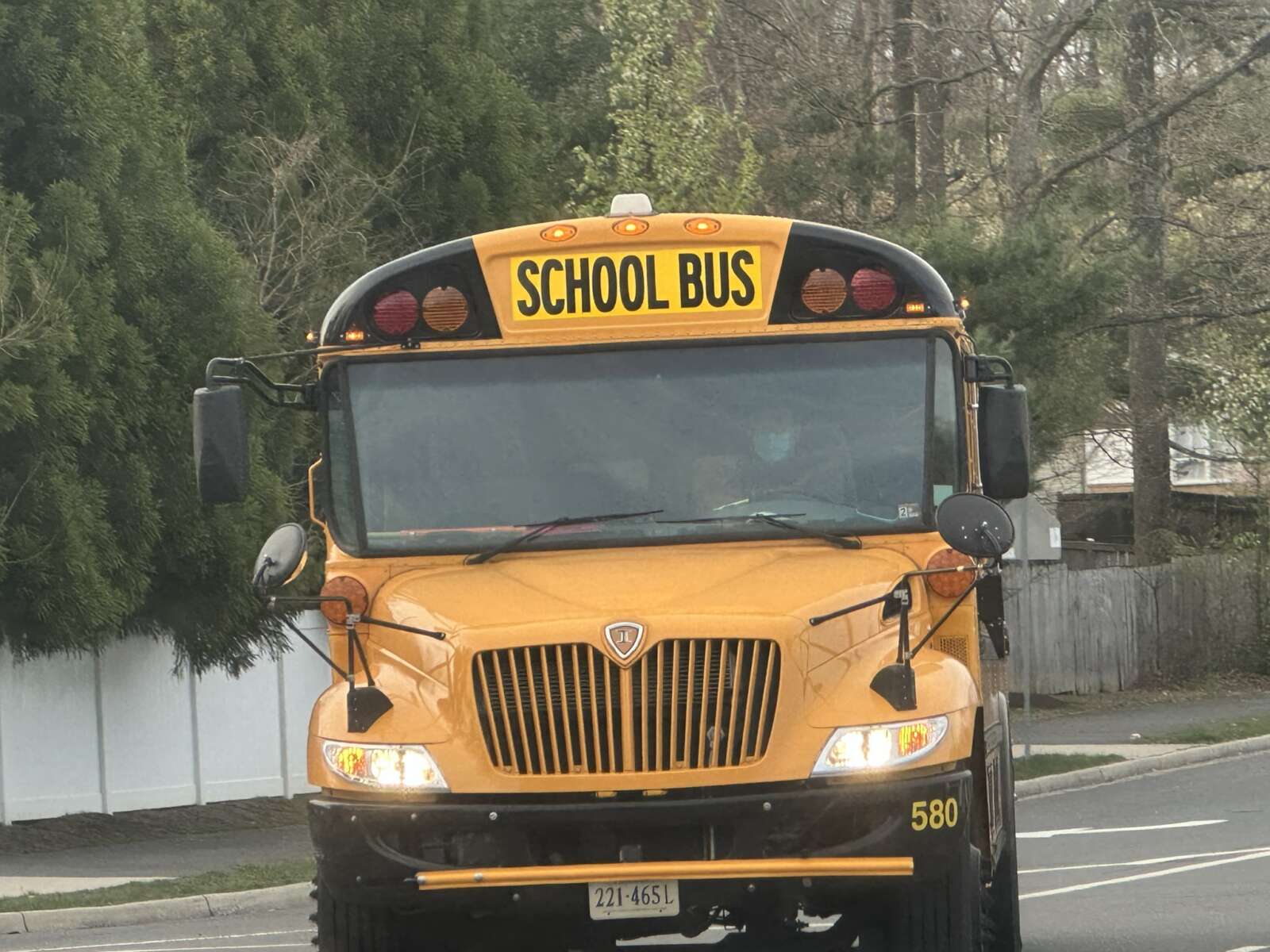
The Fairfax County School Board is moving ahead with its plan to change middle school start times.
According to Fairfax County Public Schools, research has shown that later start times could positively influence student academic performance and mental and emotional well-being.
Last September, the school system awarded consulting firm Prismatic Services a contract to develop a plan for changing middle school start times to 8 a.m. or later. The goal is to make these changes without changing high school start times or impacting the FCPS budget.
Currently, all middle schools start at 7:30 a.m. FCPS moved high school start times to around 8 a.m. in fall 2015 through its Blueprint for Change adoption. At the time, the then-superintendent said revisions to middle school start times would be considered at a later date.
At a meeting last Thursday (Feb. 22), the school board received an update on the plan from Prismatic Services President Dr. Tatia Prieto, who said the goal is to recommend start times to the board in January 2025 with the intent to implement changes by 2026, if the board adopts them.
“To get there, we have a number of milestone activities,” Prieto said. “The background report, which we’re currently engaged in, [covers] the history of efforts in Fairfax around this issue. We’re also developing a number of case studies with a few large school districts to look at lessons learned from their implementation.”
The firm will also conduct on-site observations at selected middle schools.
“This is going to include observing bus observations at selected middle schools in order to get a good feel for things,” Prieto said.
The plan also includes a total of eight public information sessions for the community — four in the spring and four in the fall.
“The spring ones are going to be more informational in nature,” Prieto said. “We’ll communicate about sleep research, and let participants discuss how later school start times could be beneficial and could be implemented. And then the fall ones will present two to four alternatives for input.”
Additionally, the firm will conduct online surveys and forums. One major concern in changing school start times is transportation constraints, which Prieto said would be covered in the information sessions.
“Analyzing the potential impact of moving middle school start times on both the number of drivers needed, and on all the special programs will be part of our work on this project,” Prieto added.
Mount Vernon District School Board Representative Mateo Dunne questioned how a possible time change would affect extracurricular activities like sports, particularly in the fall and winter when the sun goes down earlier.
Prieto pointed to Anne Arundel County Public Schools, which also hired Prismatic Services to help change its school start times.
“All of their middle schools start at 9:15. They shifted their sports program — which is much more extensive than what you currently have — to the after hours, and are not experiencing any problems,” she said.
Dunne also asked how a change in the start time would affect staff and teachers working at middle schools. Prieto said they propose surveying teachers to find out if they foresee any potential issues.
“I will add that we did develop, as one of the initial documents for this, a list of the key stakeholders we need to talk to,” she said.
Springfield District Representative Sandy Anderson requested more information on how later start times has affected attendance at other schools.
“I have an eighth grader. I can’t imagine having him have to get to school on his own at 9:40, so that is terrifying to me,” Anderson said.

